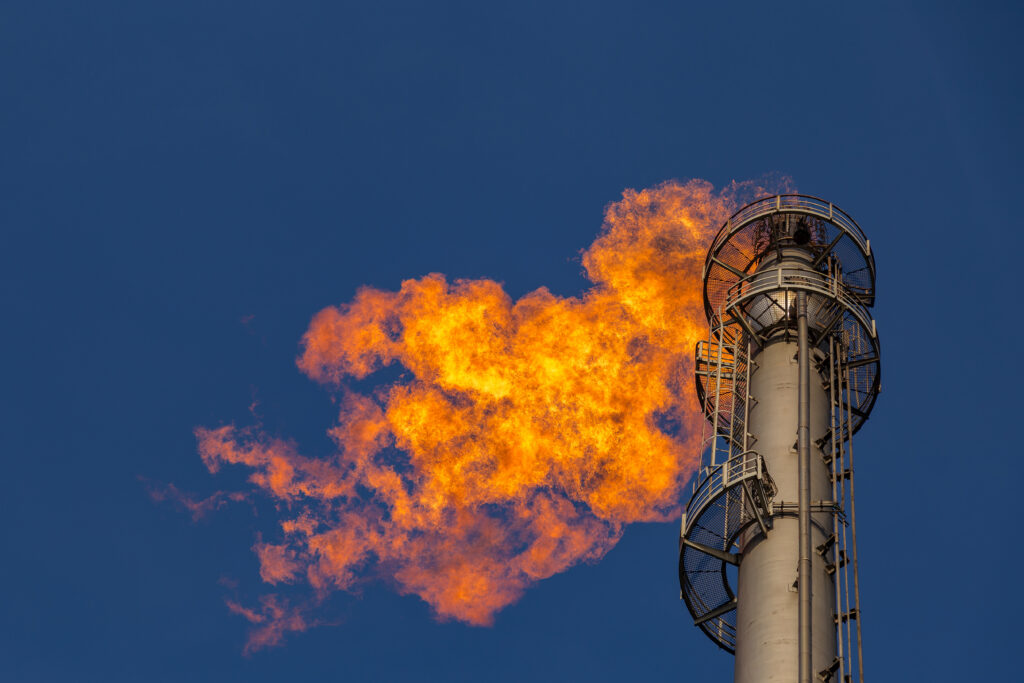The Impact of the Inflation Reduction Act on Reducing Methane Emissions in the U.S. Oil and Gas Industry
4 minutes read
UncategorisedThe Impact of the Inflation Reduction Act on Flaring in the U.S. Oil and Gas Industry

The amount of unburned Methane (methane slip) released from flare sites is dependent on the combustion efficiency of the flame. This can vary depending on wind conditions, gas composition and flow velocity amongst other factors .
The Inflation Reduction Act (IRA), signed into law in August 2022, includes various measures aimed at addressing climate change, with a focus on reducing methane emissions, particularly from flaring in the oil and gas sector. One of the act’s key provisions is the introduction of a methane emissions tax, which imposes financial penalties on operators that emit excessive methane during flaring operations.
Methane is a highly potent greenhouse gas with a global warming potential more than 25 times higher than carbon dioxide. The IRA’s methane tax is a pivotal step toward curbing methane emissions, specifically targeting the oil and gas industry, which accounts for a significant portion of methane released into the atmosphere during operations.
Methane Tax on Flaring Operations
The IRA’s methane tax is the first of its kind in the U.S., and it applies to oil and gas operators that exceed a certain threshold of emissions. Specifically, the tax kicks in for companies emitting more than 25,000 metric tons of CO₂ equivalent annually. The tax is set at:
- $900 per metric ton of methane in 2024,
- $1,200 per metric ton in 2025,
- $1,500 per metric ton in 2026 and beyond.
This tax particularly impacts oil and gas operations that rely on flaring to manage excess gas during production. Flaring, the burning of natural gas that cannot be processed or sold, is common in oil fields where infrastructure for gas capture is insufficient or unavailable. While flaring is preferred over venting because it combusts methane and converts it into CO₂, it still results in significant emissions. Moreover, incomplete combustion in flaring can still release large amounts of methane.
Financial and Operational Implications for Oil and Gas Companies
The introduction of this tax puts significant pressure on oil and gas companies, especially those with older infrastructure or operations in remote areas where capturing or utilizing gas is challenging. Companies that continue to rely on flaring without implementing more efficient gas capture technologies will face escalating financial penalties.
To avoid these penalties, many oil and gas operators are now prioritizing investments in flare gas recovery systems (FGRS) and other technologies that reduce the need for flaring. These systems capture gas that would otherwise be flared, allowing it to be used or sold instead. This not only helps operators avoid methane taxes but can also turn what was once a waste product into a valuable commodity.
In addition to FGRS, other technologies, such as automated flare monitoring and continuous emissions monitoring systems (CEMS), are becoming essential for compliance. These systems help operators track their emissions in real time and ensure that flaring is minimized or optimized for maximum combustion efficiency.
Environmental Benefits and Long-Term Industry Impact
The methane tax is expected to significantly reduce methane emissions from flaring over the next decade. By placing a direct cost on emissions, the IRA incentivizes oil and gas companies to adopt cleaner technologies and practices. According to the Environmental Defense Fund (EDF), implementing these technologies could reduce methane emissions by up to 50% by 2030.
Furthermore, this regulatory shift is likely to spur innovation within the industry, leading to the development of new, more efficient methods of gas capture and utilization. The long-term result is a more sustainable oil and gas industry that aligns with global climate targets.
Conclusion
The Inflation Reduction Act’s methane tax represents a substantial shift in the regulation of methane emissions from flaring in the U.S. oil and gas industry. While it imposes financial costs on operators, it also provides a clear incentive to adopt cleaner technologies that reduce emissions and promote sustainability. As the industry adapts to this new regulatory environment, it is expected that we will see a significant reduction in methane emissions, contributing to the broader fight against climate change.



